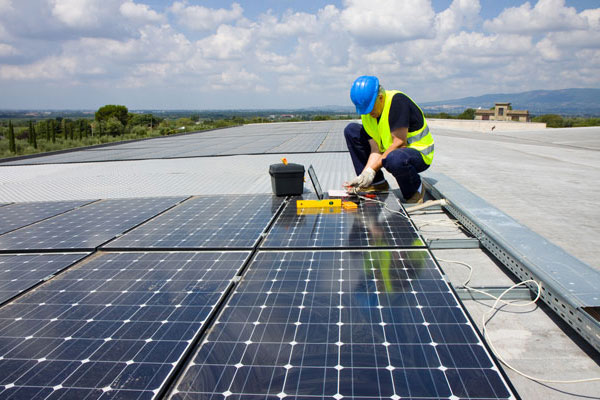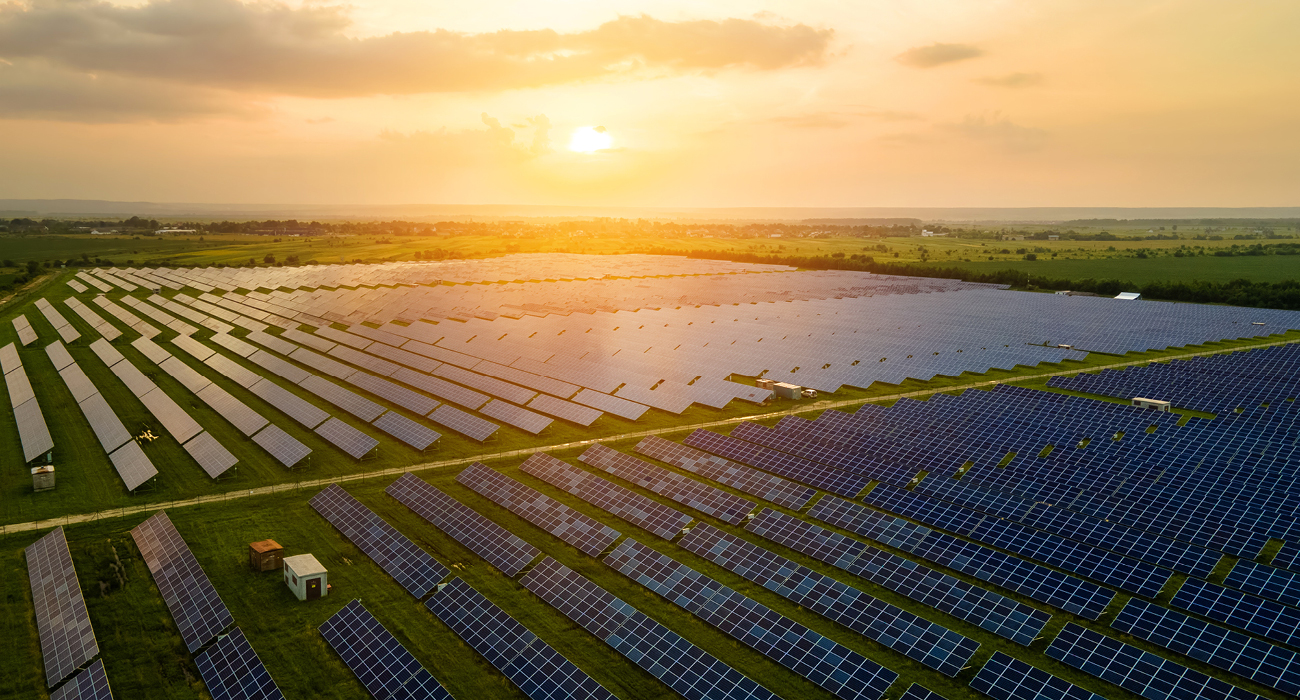In the UK, the on-site-generation model tends to include the export of any excess power to the grid. But in mainland Europe, another more efficient and sustainable plan is unfolding.
As part of the European Union’s (EU's) ambitious goal to dramatically expand roof-top solar, every town with a population of 10,000 or more will be supported to set up an ‘energy community’ to share power.
The hope is that locally-generated solar could then meet a sizeable share of each community’s power requirements.
Indeed, by 2030, the goal is for solar to deliver 25% of the EU’s total electricity demand – a whopping 700TWh per year (more than twice the UK’s annual consumption).
To support this target, new regulations will mandate roof-top solar on all new public buildings in the EU from 2026, and on all new-build houses from 2029. Already, around 50GW is being installed each year.
Debunking the solar myth
“Oh, that wouldn’t work here”, is the typical response we hear when discussing a similar plan for the UK. “It’s far too cloudy/rainy in Britain for a solar roll-out to be practical.”
But the belief that solar is only worthwhile in sunny climes is a myth. New technology means solar panels can still generate at 85% capacity on cloudy days.
In Europe, many of the early adopters have been multi-family buildings, with one rooftop plant being shared by all units underneath. In the UK, we have fewer apartments – but can still benefit from energy sharing in other ways.
For example, we have a good supply of large urban roofs; perfect for cheap solar installations. And if we share the output of these directly with the neighbours, we can bring cheaper, green, local energy to citizens and create new ways for businesses to exhibit their eco credentials and forge new relationships with local customers.
Reducing infrastructure costs
Solar power is the cheapest and most reliable form of renewable energy generation we have. It’s also predictable – we know what time the sun will rise and set each day, and so can plan around its forecasted generation. This makes it ideal to meet the day-time base-load needs of local communities.
And when you share this energy, as well as being cost-effective, it’s more efficient. This is because using energy close to the point of generation results in less power loss, whereas when you export to the grid, you can lose as much as 10% in the transfer.
Consuming power closer to source also reduces the need to build expensive and complex network infrastructure to link up multiple local generation points to the main grid. Not only does this take time and money but it also requires expensive resources – copper, cabling, poles, steel pylons etc.
Electricity consumption set to at least triple
Currently, UK energy consumers face growing energy costs to fund the necessary upgrade and expansion of our high-voltage transmission and low-voltage distribution grids to accommodate the huge rise in electricity generation.
And as we switch to electric vehicles and move away from fossil-fuels for home heating, our electricity requirements are only expected to increase by three to five times of today’s levels.
So anything that can help us meet our increased need – and do so more cost-effectively – can only be beneficial to consumers. And one of the most efficient ways to achieve this is to decentralise and generate at or close to point of consumption.
Consumption versus export
When consumers first think about the cost benefits of on-site generation, they often focus on earning income from exporting excess power to the grid.
However, when the low returns for small-scale export become apparent, many revise this expectation and instead reduce the size of their generation assets (e.g. number of solar panels) to instead meet only their own consumption requirements.
And in the current ‘me alone’ model, that certainly makes sense, as you can typically save in the region of 35p for every kilowatt hour of on-site generated power consumed, versus only around 7-8p income from exporting to the grid via a Smart Export Guarantee (SEG) tariff. (For more on this, and Power Purchase Agreements, see our latest video).
Empowering ‘prosumers’
But if we had a model that instead focussed on installing your maximum generation potential and then sharing excess power directly with your community, then we start to create a more efficient and cost-effective system of localised energy generation.
The missing link currently is a system that facilitates direct trading between ‘prosumers’ and their neighbouring consumers. This could then support SEG payments more in line with what the generating party – the prosumer – saves in consumption costs (i.e. 35p per kilowatt).
This is yet another benefit that makes generating more renewable power locally – and sharing what we can with our communities – worth considering.
As we look for ways to transition to more a sustainable, efficient and low-carbon future, supporting the rise of the ‘prosumer’ and energy sharing can only be good news for people and planet.


/npm214%20Digital_H_UB92.jpg)
/npm214%20Digital_H_UB136.jpg)
/npm214%20Digital_H_UB101.jpg)

/npm214%20Digital_H_UB132.jpg)
/npm214%20Digital_H_UB88.jpg)
/npm214%20Digital_H_UB95.jpg)
/Author%20Profile%20Glossop_Jordan_G.png)
